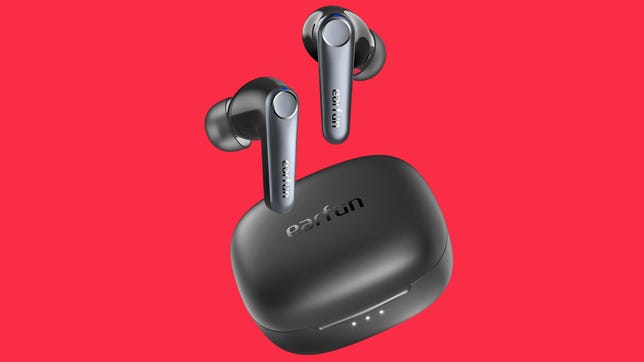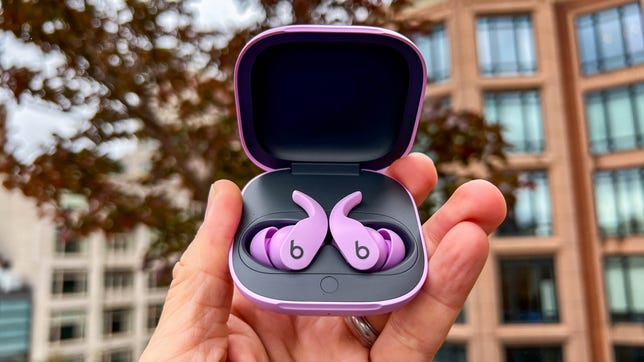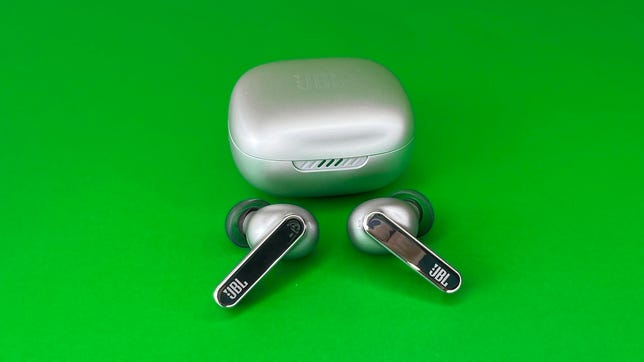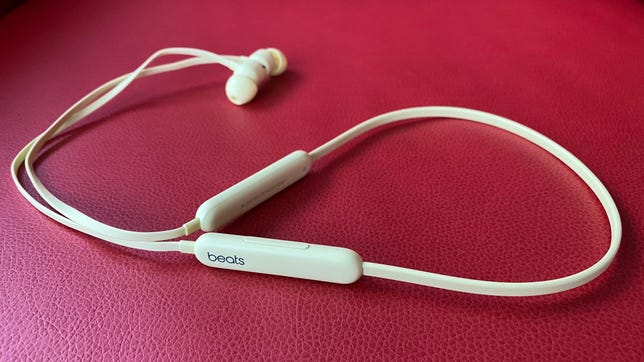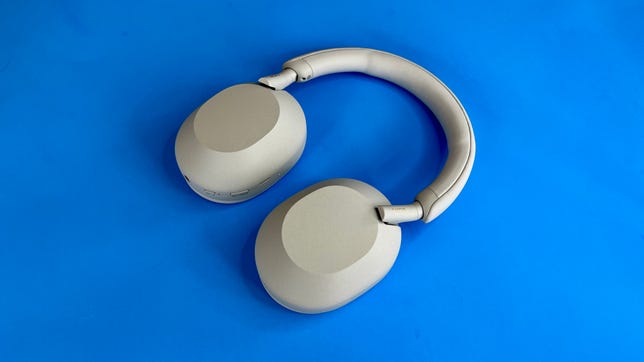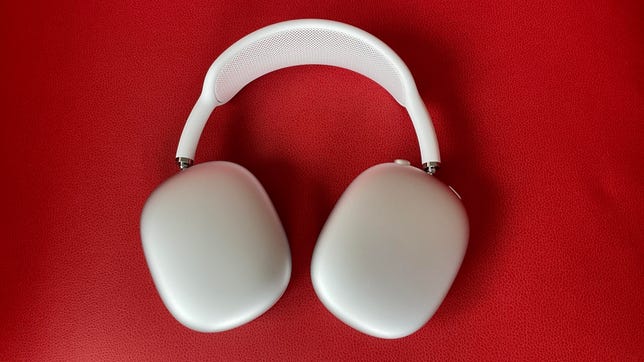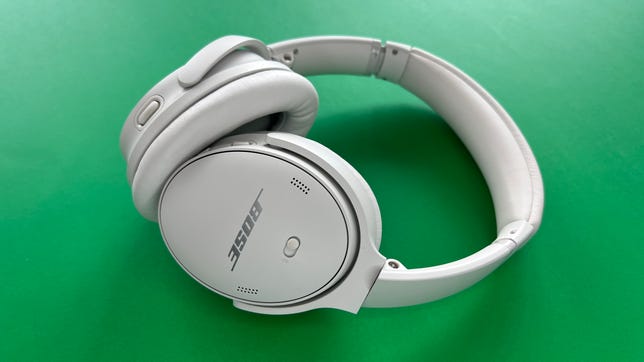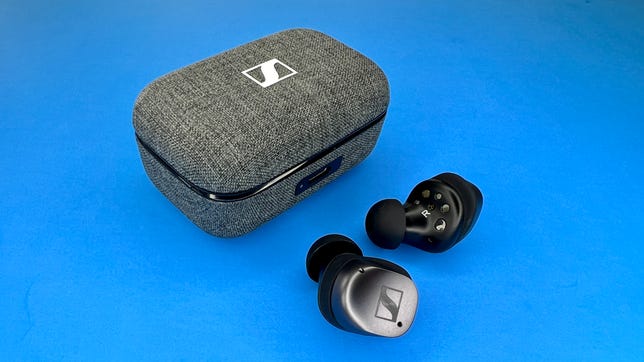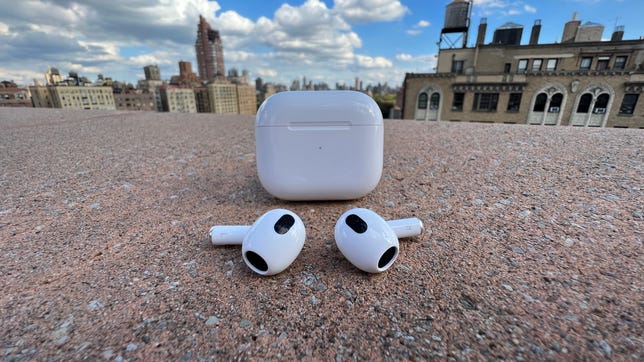Technologies
Best Wireless Headphones and Earbuds for iPhone 12
Need a swanky new pair of the best earbuds for iPhone? We’ll run through all the top options.

Sure, you can buy an adapter to use wired headphones with your iPhone 12 or any of the latest iPhones, including the iPhone 13 and iPhone 14, that don’t have a headphone jack. But most people are looking for a pair of wireless earbuds or headphones to use with their new iPhone, whatever model it may be.
As we’re all quite aware, Apple offers buds and headphones under its own brand and its Beats brand (yes, Apple owns Beats), and we’ve included the AirPods 3, AirPods Pro 2 and Beats Fit Pro on this list, but there are plenty of non-Apple-branded Bluetooth headphones and earbuds that work really well with iPhones, as well as other Apple devices and non-Apple devices, including Android smartphones and tablets.
For those looking for more budget AirPods alternatives, we’ve got a list of the best cheap earbuds and five true wireless earbuds worth buying for under $40.
Battery Life
Rated up to 6 hours
Noise Canceling
Yes (ANC)
Multipoint
No
Headphone Type
Wireless earbuds
Water-Resistant
Yes (IPX4 — splash-proof)
The new AirPods Pro (2nd generation) are powered by Apple’s new H2 chip, which delivers more processing power while being more energy efficient, according to Apple. The new chip, combined with new low-distortion drivers, allows for improved sound that offers better clarity and depth. The noise canceling is also improved — Apple says the new AirPods have «double» the noise canceling of the original AirPods Pro. Additionally, the new AirPods add an extra hour of battery life, up from five to six hours with noise canceling on. Plus, a speaker in the case that emits a sound that helps locate your buds via Find My should they decide to hide from you.
Earfun has put out a series of wireless earbuds over the last couple of years with one important commonality: They’re very good values, made more so by frequent discounts. The company’s new-for-2023 Earfun Air Pro 3 earbuds feature the latest Qualcomm QCC3071 system-on-a-chip with aptX Adaptive for Android and other devices that support the new LE Audio standard and LC3 audio codec, which is superior to the SBC codec (they also support AAC for Apple devices).
Lightweight and comfortable to wear — I got a good seal with the largest ear tip size — these aren’t a huge upgrade over the Earfun Air S, but they are better. They have slightly larger wool-composite drivers (11mm versus 10mm), slightly improved noise canceling and better battery life (up to seven hours with noise canceling on, according to Earfun).
In short, the Earfun Air 3 deliver strong performance for their modest price, with robust bass, good clarity and a relatively wide soundstage. They also pack in a lot of features, including a wireless charging case and «multidevice» connectivity. (I could pair them to two devices simultaneously but had to pause the music on one device and hit play on the other for the audio to switch.) They’re IPX5 splash-proof and also work well (though not exceptionally well) as a headset for making calls.
Note that after you activate the instant 10%-off coupon at Amazon, adding the code EAP3CNET at checkout gives you an additional 20% off, bringing the buds’ price down to $56.
While the Beats Fit Pro (on sale for $160) technically aren’t AirPods, they’re built on the same tech platform as the AirPods Pro (yes, Apple owns Beats). Unlike Beats’ earlier and less expensive Studio Buds, the Beats Fit Pro include Apple’s H1 chip and have most of the AirPods Pro’s features, including active noise canceling, spatial audio and Adaptive EQ. I’d venture to call them the sports AirPods you’ve always wanted. And for some people, they might just be better than the AirPods Pro.
Over the years, JBL has put out some decent true-wireless earbuds, but nothing that really got me too excited. That’s finally changed with the arrival of the Samsung-owned brand’s new Live Pro 2 and Live Free 2 buds. Both sets of buds — the Live Pro 2 have stems while the Live Free 2 have a pill-shaped design — offer a comfortable fit along with strong noise canceling, very good sound quality and voice-calling performance, plus a robust set of features, including multipoint Bluetooth pairing, an IPX5 splash-proof rating and wireless charging.
The Live Pro 2 and Live Free 2 are equipped with the same 11mm drivers, six microphones, oval tubes and oval silicon tips. Aside from the design, the biggest difference between the two buds is battery life; the stemless Live Free 2 is rated for up to seven hours, while the Live Pro 2 is rated for 10 hours. The Live Pro 2 is available in four color options.
Battery Life
Rated up to 9 hours
Noise Canceling
Yes (ANC)
Multipoint
No
Headphone Type
Wireless Earbuds
Water-Resistant
Yes (IPX4 — splash-proof)
Unlike the «open» LinkBuds, the LinkBuds S are traditional noise-isolating earbuds with tips you jam in your ears. They’re more compact and lighter than Sony’s flagship WF-1000XM4 and also feature Sony’s V1 processor. While their sound and noise canceling don’t quite measure up to the XM4’s, they’re close and cost less. They’re the Sony buds for people who can deal with larger buds like the XM4 but want 80 to 85% of those buds’ features and performance for $80 less.
Battery Life
Rated up to 12 hours
Noise Canceling
No
Multipoint
No
Headphone Type
Wireless earbuds
Water-Resistant
No IP rating
I didn’t think I’d ever see a version 2.0 of Beats’ once-popular BeatsX neckband-style wireless earphones, but it’s arrived with a new name — the Beats Flex — and a much-cheaper $50 price tag, which is half of what its predecessor had been selling for.
The Flex instantly becomes an affordable, Apple-friendly wireless alternative to the AirPods, which start around $100 for the standard version with a wired charging case (but will be selling for as low as $99 this holiday season). The good news is they sound better than both the original BeatsX and standard AirPods. They also work well for making calls and have better battery life than the original. The bad news? The design is passe in a world now dominated by true wireless earbuds.
They’re available in black or yellow at launch, with gray and light blue arriving in early 2021.
Battery Life
Rated up to 32 hours
Noise Canceling
Yes (ANC)
Multipoint
Yes
Headphone Type
Over-ear wireless headphones
Water-Resistant
No IP rating
When you have a product that a lot of people love, change can be risky. Such is the case for Sony’s WH-1000XM5, the fifth generation of the 1000X series headphones, which were first released in 2016 as the MDR-1000X Wireless and have become increasingly popular as they’ve improved with each generation. Over the years, Sony has made some tweaks to the design, but nothing as dramatic as what it’s done with the WH-1000XM5. Other than the higher $349 price tag most of those changes are good, and Sony’s made some dramatic improvements with voice-calling performance as well as even better noise canceling and more refined sound.
Battery Life
Rated up to 20 hours
Noise Canceling
Yes (ANC)
Multipoint
No
Headphone Type
Over-ear wireless headphones
Water-Resistant
No IP rating
Yes, they’re expensive, but the AirPods Max deliver richer, more detailed sound than lower-priced competitors from Bose and Sony. They also feature arguably the best noise canceling on the market along with premium build quality and Apple’s virtual surround spatial audio feature for video watching. While they’re heavy, they manage to be surprisingly comfortable, though I did have to adjust the mesh canopy headband to sit a little more forward on my head to get a comfortable secure fit when I was out walking with them. They should fit most heads well, but there will be exceptions.
Battery Life
Rated up to 25 hours
Multipoint
Yes
Headphone Type
Over-ear wireless headphones
Water-Resistant
No IP rating
The QuietComfort 45 has virtually the same design as its predecessor, the QuietComfort QC35 II, which many people considered one of the most comfortable over-ear headphones — if not the most comfortable. It has the same drivers, according to Bose, and the buttons are in the same place. However, there are small but notable changes. First off, these thankfully have USB-C instead of Micro-USB.
Secondly, the microphone configuration is different. Not only have the mics been shifted on the headphones, but there’s now an extra external microphone for voice pick-up, which means the QC45 has a total of six microphones, four of which are beamforming and used for voice. By contrast, the QC35 II has a total of four, two of which are used for voice. (The Bose Noise Canceling Headphones 700 also have six microphones total.)
These headphones are excellent for making calls. They’re similar to the Bose Headphones 700 in that regard. They also include top-notch noise canceling and multipoint Bluetooth pairing, so you can connect them with a PC and your phone simultaneously. Read our Bose QuietComfort 45 review.
Featuring excellent sound, improved noise canceling and voice-calling performance as well a smaller, more refined design that includes stabilizing fins (so the earbuds stay in your ears more securely), the Sennheiser Momentum True Wireless 3 are among the best new true-wireless earbuds for 2022. They’re also one of the best true-wireless earbuds overall, giving the Sony WF-1000XM4 a run for the money.
Battery Life
Rated up to 6 hours
Noise Canceling
No
Multipoint
No
Headphone Type
Wireless earbuds
Water-Resistant
Yes (IPX4 — splash-proof)
Take one look at the new design of the third-gen AirPods ($179), and the first thing you’ll probably think is: «Those look like the AirPods Pro without ear tips.» You wouldn’t be wrong. While they’re more fraternal than identical twins, the AirPods 3 are shaped like the AirPods Pro, with the same shorter stems and same pinch controls as those of the Pro. Aside from the design change, which should fit most ears better than the AirPods 2nd Generation (though not very small ears), the biggest change is to the sound quality: It’s much improved. Also, battery life is better, and the AirPods 3 are officially water-resistant.
More headphone recommendations
- Best Open Wireless Earbuds That Aren’t AirPods
- Best Wireless Earbuds and Headphones for Making Calls
- Best Wireless Headphones for Working at Home in 2023
- Best Noise-Canceling True Wireless Earbuds of 2023
- Best Headphones for Running
- Best On-Ear Headphones for 2023
- Best Workout Headphones in 2023
- Best Over-Ear Headphones of 2023
- Protect Your AirPods: 5 Cases Under $15
- Best Sony Headphones for 2023
Technologies
We’ve Found the Coolest, Most Futuristic Tech at CES 2026. And the Show Just Started
We’ve already had a day to trawl for our favorite cutting-edge technology. Neat stuff abounds!

We have people all over the show floor and beyond at CES, searching for the most interesting, innovative and cutting-edge tech available. A ton of useful new information is also available, which you can find on our CES 2026 live blog and in our CES hub.
The show floor opened Tuesday, and we had a lot of preview time beforehand to gawk at some CES staples, such as robots, electronic toys, phones and more. I’ll be back here to top off our fun finds regularly throughout the show.
Technologies
Grab This Tariff-Busting Xbox Series X Deal and Save $44 While You Can
You can bag a 1TB Xbox Series X for just $606, but act fast, since we don’t know how long this deal will last.
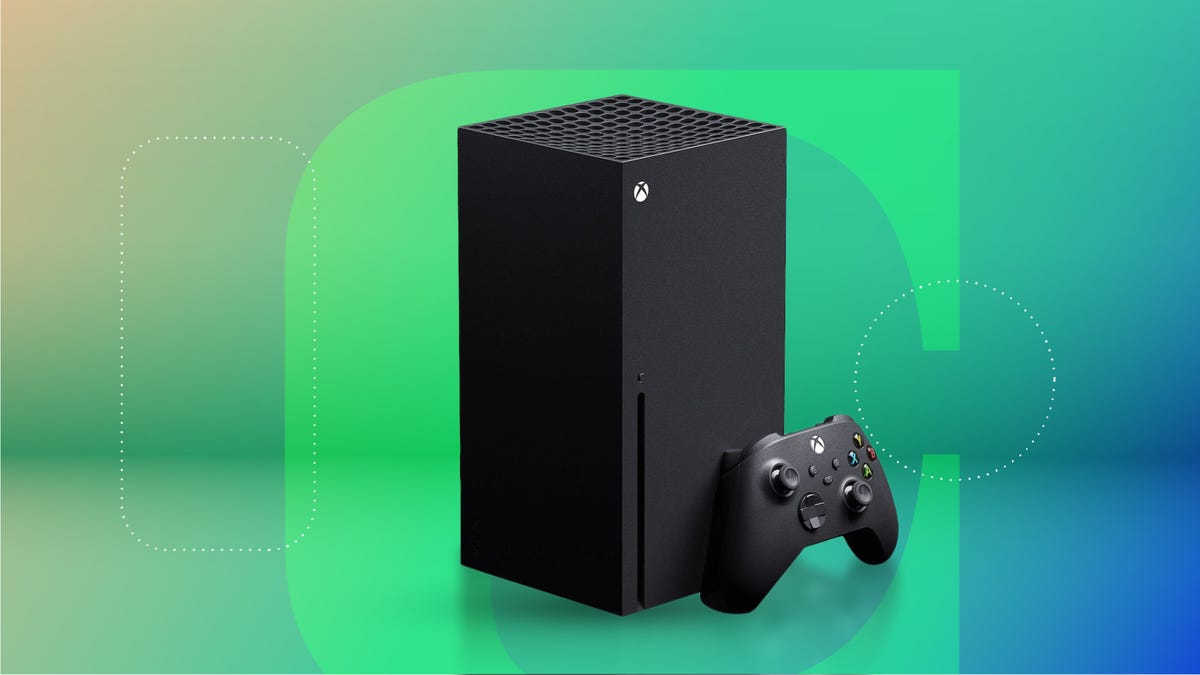
Ever since tariffs and other economic uncertainty led to Xbox price increases in late 2025, things have gotten expensive. A 1TB Xbox Series X now sells for $50 more than it used to, and there is little sign of these prices improving anytime soon.
Thankfully, every so often, a deal pops up that helps make things a little more affordable like this Walmart discount that slashes that same Series X to just $606. The catch? Well, there isn’t one. But we don’t expect this deal to last for long, so make sure to get your order in soon before it leaves for good.
The Xbox Series X has been around for a while now, so there are no surprises with what you get in the box. The Series X comes with a 1TB SSD for storage, and you get a controller in the box. This version also has a disc drive for installing games and watching Blu-ray movies, too.
Hey, did you know? CNET Deals texts are free, easy and save you money.
You can look forward to watching 4K content and playing 4K games, as well as enjoying audio options such as Dolby Digital, Dolby TrueHD and DTS. All of that makes this a capable machine, whether you want to watch content or play games.
CHEAP GAMING LAPTOP DEALS OF THE WEEK
Why this deal matters
It’s unlikely that Xbox prices will get any cheaper anytime soon, so deals like this are the best we can expect for a while now. If you’re in the market for an Xbox and have the $604 to spare, then this is probably the time to place your order before it’s too late.
Technologies
Dreaming of a Cable-Free World? I Think I Just Saw the Future of Wireless Power
This is the coolest thing I’ve seen at CES 2026. And it has nothing to do with AI.

Many technology companies arrive at CES 2026 in Las Vegas, the world’s biggest tech show. They often make bold claims about the life-changing potential of their innovations, but it’s rare to see anything that actually lives up to the hype.
When you do see something truly special, on the other hand, it can seem like magic. That’s exactly how I felt when I experienced the wireless charging demo from Finnish company Willo, a deep-tech startup that’s just emerged from stealth mode.
«Seeing is believing,» Willo co-founder and President Marko Voutilainen tells me as I take a seat in a Las Vegas hotel suite to witness what the company hopes will be a revolution in wireless power. It could render the charging cables that rule our lives and clog up our drawers obsolete for good.
Wireless power has long posed a conundrum to tech companies. There needs to be perfect alignment between a device and the charger, which means that it’s often just as convenient to simply plug a cable into your phone. Wireless charging today feels like a half-baked solution.
The tech that Willo showed me doesn’t rely on charging pads, line of sight, directional targeting or even immediate proximity. Instead, it allows devices to be charged simply by existing within the force field of the power source.
The demo I’m being shown looks unassuming. They tell me I shouldn’t get caught up too much with the form factor of the power source — a simple gray-white cube. This isn’t a consumer device that’s for sale, merely a means to demonstrate the technology to me.
Willo CEO Hari Santamala picks up several receivers, black boxes shaped like phones with LEDs on the top. As he moves them to within 15 inches or so of the power source, the LEDs light up. He moves them around the cube, rotating them in different directions. The LEDs remain lit.
I’m seeing. I’m believing.
Making power cables the floppy disks of tomorrow
Unfortunately, I’m not allowed to take any pictures or videos. This week at CES, Willo is emerging from stealth mode to show the world what it can do, but it’s still playing its cards close to its chest.
The core technology is based on more than a decade of research by the company co-founder and CTO Nam Ha-Van. The company is claiming a number of world firsts with its wireless power tech, including the ability to rotate devices at any angle while charging, along with the ability to charge multiple devices at once.
Santamala talks me through his vision for how it would exist in the home. «You have to build the transmitter in a way that it’s kind of a natural part of your environment,» he says. «Ideally, we don’t see any of this,» he adds, gesturing to the cube.
You could sit on the sofa with your phone in your pocket, and it would be quietly charging while you watch TV. If you were working from home, you could move freely around your house with your laptop, never having to worry about plugging it in.
«We want to do to power cables, what floppy disks are to us today,» Voutilainen says. «They’re remnants of the past.»
It feels like the thing we’ve been waiting for — the way wireless charging was always supposed to be. So when can we expect to get it?
Willo is here at CES meeting journalists like me, but also the kind of partners it will need to adopt this technology and take it out into the world. Voutilainen and Santamala are cagey about their ideal strategy for doing this, but it feels like they’re hinting towards something open and large-scale. Comparisons to Wi-Fi and Bluetooth are thrown around.
«This can really change our everyday lives if introduced correctly in a very kind of open and driving-the-market-forward kind of way,» Santamala says. The company’s tech is «pretty ready» for industrialization, he adds — it just depends on their partners’ use cases and timelines.
I depart from the demo suite, hoping that what I’ve seen is as viable as I’ve been led to believe. Willo clearly thinks it has something special on its hands, and if the rest of the tech industry agrees, this might just be the first step toward a future free of charging cable fuss and inconvenience.
-

 Technologies3 года ago
Technologies3 года agoTech Companies Need to Be Held Accountable for Security, Experts Say
-

 Technologies3 года ago
Technologies3 года agoBest Handheld Game Console in 2023
-

 Technologies3 года ago
Technologies3 года agoTighten Up Your VR Game With the Best Head Straps for Quest 2
-

 Technologies4 года ago
Technologies4 года agoBlack Friday 2021: The best deals on TVs, headphones, kitchenware, and more
-

 Technologies4 года ago
Technologies4 года agoGoogle to require vaccinations as Silicon Valley rethinks return-to-office policies
-

 Technologies4 года ago
Technologies4 года agoVerum, Wickr and Threema: next generation secured messengers
-

 Technologies4 года ago
Technologies4 года agoOlivia Harlan Dekker for Verum Messenger
-

 Technologies4 года ago
Technologies4 года agoiPhone 13 event: How to watch Apple’s big announcement tomorrow


